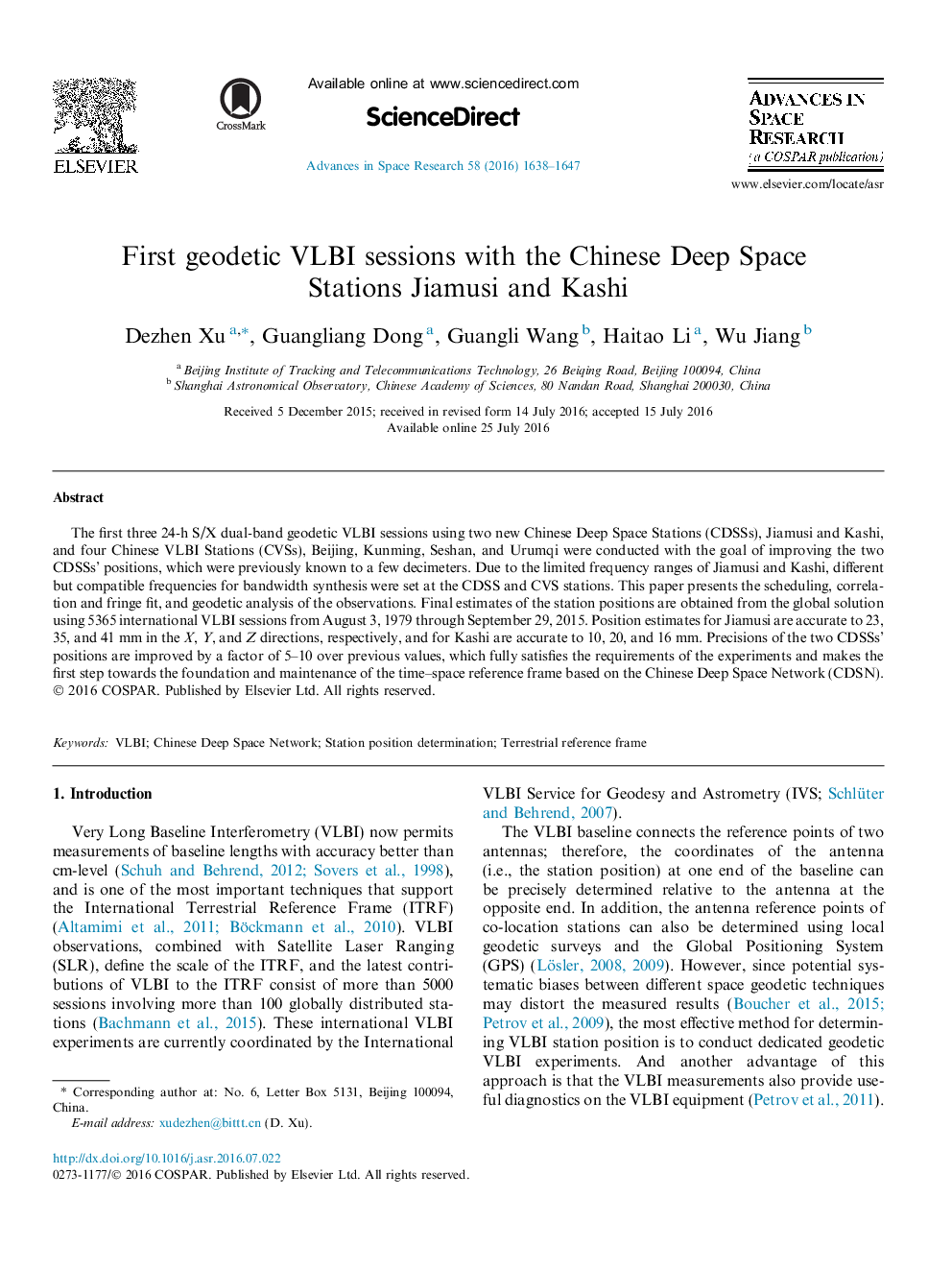| Article ID | Journal | Published Year | Pages | File Type |
|---|---|---|---|---|
| 5486598 | Advances in Space Research | 2016 | 10 Pages |
Abstract
The first three 24-h S/X dual-band geodetic VLBI sessions using two new Chinese Deep Space Stations (CDSSs), Jiamusi and Kashi, and four Chinese VLBI Stations (CVSs), Beijing, Kunming, Seshan, and Urumqi were conducted with the goal of improving the two CDSSs' positions, which were previously known to a few decimeters. Due to the limited frequency ranges of Jiamusi and Kashi, different but compatible frequencies for bandwidth synthesis were set at the CDSS and CVS stations. This paper presents the scheduling, correlation and fringe fit, and geodetic analysis of the observations. Final estimates of the station positions are obtained from the global solution using 5365 international VLBI sessions from August 3, 1979 through September 29, 2015. Position estimates for Jiamusi are accurate to 23, 35, and 41Â mm in the X, Y, and Z directions, respectively, and for Kashi are accurate to 10, 20, and 16Â mm. Precisions of the two CDSSs' positions are improved by a factor of 5-10 over previous values, which fully satisfies the requirements of the experiments and makes the first step towards the foundation and maintenance of the time-space reference frame based on the Chinese Deep Space Network (CDSN).
Keywords
Related Topics
Physical Sciences and Engineering
Earth and Planetary Sciences
Space and Planetary Science
Authors
Dezhen Xu, Guangliang Dong, Guangli Wang, Haitao Li, Wu Jiang,
